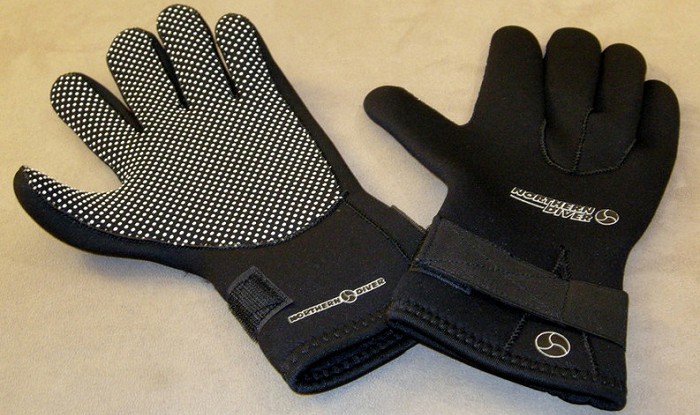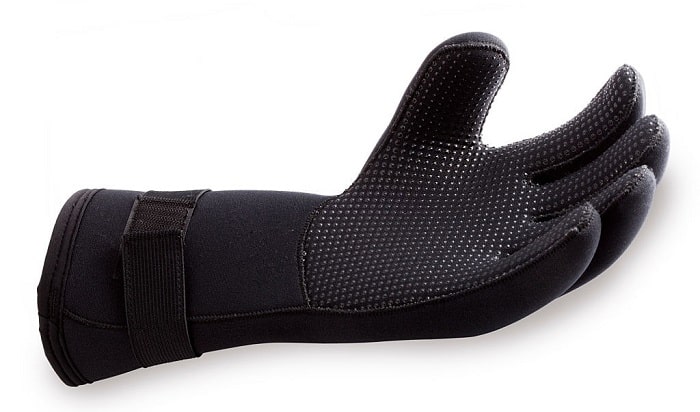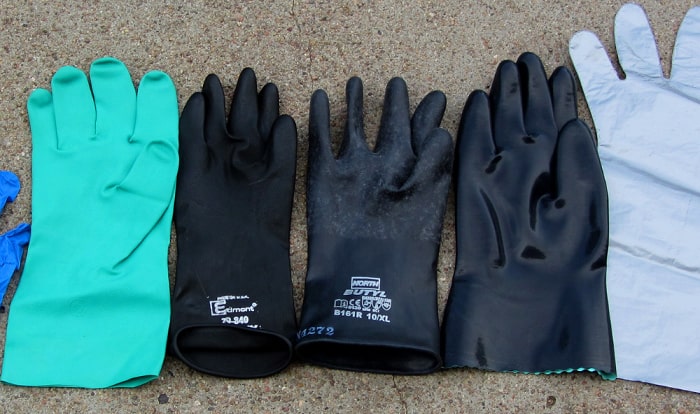In medical and chemical procedures, choosing the right gloves for proper hygiene and protection is imperative. When doctors first invented rubber gloves, nitrile and latex were the only options. But in 1930, neoprene was introduced. Since then, it has upgraded the safety level of surgical gloves.
Neoprene is a type of synthetic rubber that has wide applications in multiple industries. When used to make gloves, it offers outstanding flexibility, the ability to withstand environmental conditions, and water resistance. However, the material has high production costs and poor resistance to oils, strong acids, and electricity.
In this article, besides answering the question “What are neoprene gloves?”, we will give information about neoprene advantages and disadvantages so you can make the smartest choice when purchasing your next pair of gloves.
Table of Contents
What Is a Neoprene Glove?
Neoprene is a synthetic rubber made by polymerizing chloroprene. The material has high chemical stability. It can maintain flexibility under a wide range of temperatures. The applications of neoprene are broad. It can serve as automotive belts, laptop sleeves, or even orthopedic surgery braces.
The neoprene gloves definition is simple. It means all gloves that are made from neoprene. Before they are sold in the market, neoprene disposable gloves must undergo rigorous testing procedures that meet the FDA standards. To learn more about the production of rubber gloves, watch this video by Insider.
Besides medical gloves, manufacturers use neoprene to produce other styles, such as cycling gloves, snorkeling gloves, wetsuits, and kitchen gloves.
The Benefits of Neoprene Gloves
Neoprene can protect the hands from multiple hazards while performing meticulous tasks. Their advantages are beyond protective functions as a good pair of neoprene gloves can also enhance precision and comfort during long hours at work. Some benefits of these gloves include:
- Water resistance: As a kind of rubber, neoprene can resist moisture. When you work with liquids, waterproof neoprene gloves offer great gripping while keeping the hands completely dry. This is particularly useful in dental and surgical procedures. Though the water-resistant level of neoprene is not as high as nitrile, these gloves can resist many kinds of liquids.
- Flexibility: Among glove materials, neoprene is the rare one that allows finger sensitivity and complete freedom of movement under a wide variety of conditions. Neoprene stays flexible underwater, in the hot kitchen environment, or in freezing weather. When exposed to bad weather or sun rays, they won’t degrade or split.
- Their flexibility offers a high level of dexterity for surgical procedures. Also, their resilience blocks the risks of cross-contamination or hygienic problems. Neoprene surgical gloves are most preferable in hospitals.
- Excellent fitting: Finding well-fitted neoprene gloves is not difficult. The material hugs the fingers snugly without causing any discomfort. It doesn’t leave spaces between the gloves and hands. Plus, neoprene can easily return to its original form after being stretched. You can find unisex water sport neoprene gloves widely fitted for most people.
- Durability: Neoprene naturally has high textile strength. Hence, you can wear them performing heavy-duty tasks and be rest assured of their durability. They won’t break down or become waterlogged in the water.
- Warmth: Thermality and water resistance make neoprene superior when it comes to keeping the hands warm while doing winter sports or diving. Some brands cover the gloves with soft elastic fabric to enhance the insulation.
- Being latex-free: The number of people who suffer from latex allergies increases each year. If you ever experience rash, hives, skin irritation, runny nose, or difficulty in breathing when wearing disposable gloves, they are the clear signs that you are allergic to latex. Consider using nitrile or neoprene gloves.
Besides the outstanding benefits, neoprene has many other safety features:
- Chemical resistance: Workers who deal with caustics and acids can rely on a good pair of neoprene gloves to keep their hands safe.
- Puncture and cut resistance: Though not as strong as other cut-resistant materials like steel or Kevlar, neoprene gloves protect against slight cuts, punctures, and scratches.
Disadvantages of Neoprene Gloves
Despite neoprene’s amazing advantages, there is no perfect glove material. This type of rubber has its drawbacks.
- High cost: The primary disadvantage is the cost of producing neoprene gloves. There are other materials (nitrile or vinyl) that offer similar benefits at a relatively lower price.
- Poor resistance to oils and strong acids: In the oil industry, neoprene gloves are not preferred. Once contacted with oils, greases, and fats, they lose their grip. The same situation applies to any chemical handling procedures that involve esters, certain kinds of hydrocarbons, strong acids, and ketone.
- Incapability to insulate electricity: In general, neoprene is not recommended as an electrical insulator. This is a significant drawback as most rubbers can prevent electric shock.
The Main Differences Between Nitrile and Neoprene Gloves
Nitrile and neoprene are two popular materials used in producing rubber gloves. So, what are the main differences between them? When to go for nitrile and when to go for neoprene?
The first thing to note is neoprene gloves’ chemical resistance level is lower than that of nitrile. Nitrile provides impressive resistance to engine oil, gasoline, alkalis, acids, and petroleum-based hydraulic fluids. Meanwhile, neoprene isn’t well-resisted to oils and petroleum. To make up for that, it can remarkably withstand sunlight, weather, and ozone.
Secondly, neoprene gloves protect the hands from flames while nitrile cannot. If rubber is needed for palm paddings in welding gloves, manufacturers would choose neoprene. Lastly, neoprene rubber offers more flexibility and dexterity.
Conclusion
There you have it, all you need to know about neoprene gloves! Each type of material has its benefits and drawbacks. Take time to learn about them carefully before purchasing to optimize their potential.
We hope you’ve gathered enough information about what are neoprene gloves. If you have any further questions, don’t hesitate to leave a comment. We will get to it as soon as we can. See you then!

Veronica is our content editor. She is a talent in delivery. Her main work is editing and writing articles that are both informative and simple to follow. She is in charge of synthesizing our understanding of what personal protection equipment (PPE) is needed in each job, how to best apply it, and how to visualize that equipment.




